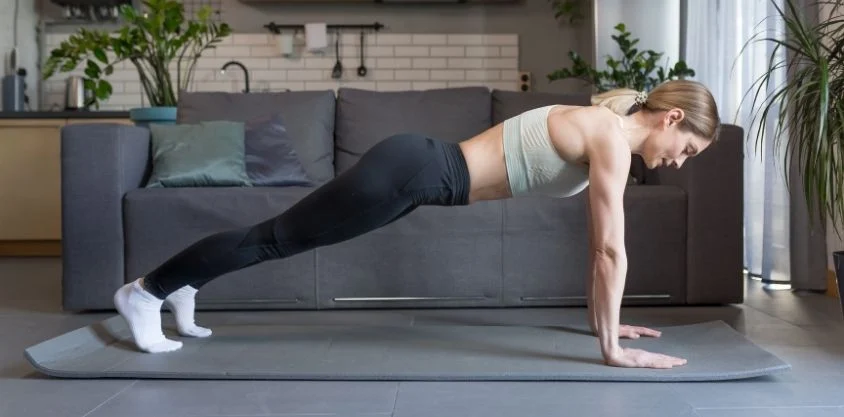
Strength training exercises are intended to tire out muscles until fatigue sets in, with rest intervals in between each set. Strength exercises consist of repetitions that challenge and fatigue muscles until fatigue sets in and failure occurs. The exercises should continue until muscle failure.
For optimal strength training results, consult with a physician, physiotherapist or exercise physiologist prior to beginning strength training. They can ensure your program starts off safely and successfully.
1. Chest Press
Chest presses can help build pectoral muscles by engaging shoulder, upper back and scapula muscles to retract your scapula and retract its position on your spine. Chest presses also strengthen supporting muscles so they are strong enough to handle pressing movements without risk of shoulder injuries.
Bench presses can help to strengthen both your core and shoulders. By activating transverse abdominus and erector spinae muscles that support your spine as well as triceps and front shoulder muscles, bench pressing provides a thorough exercise regimen for strengthening all of your core muscle groups simultaneously.
For optimal results, the exercise should be conducted with feet pressed against a bench and wrists aligned with elbows to minimize strain on wrists. Avoid swinging or collapsing weights at the top of movement to keep arms from locking out.
2. Leg Extensions
Leg extensions are an isolation exercise designed to work the quadriceps femoris muscles on the front of your thighs. While they place significant strain on knee joints, leg extensions are a fantastic strength-building exercise and can help build eye-catching quads.
Perform this exercise using either a gym machine with a padded lever, or at home using an ankle band and your own body weight as resistance. The key is pressing your thighs against either the lever or band before pushing up with legs.
Starting light and gradually adding weight is the key to successful exercises; focus on perfecting your form while gradually adding more each week while making sure that no strain or imbalances develop between legs as you train unilaterally – so the movement has maximum impact and benefits from every repetition!
3. Pull-Ups
Pull-ups can be an invaluable addition to your strength training regimen, not only because they’re an empowering movement but also because they increase upper body strength and full-body stability.
This movement can be classified as a compound exercise, meaning it recruits multiple muscles in performing the movement at different intensities. When performing this movement, the latissimus dorsi, biceps brachii and trapezius muscles are worked intensively during its performance.
At first, this movement may prove challenging to accomplish; that is completely okay! There are various techniques and modifications available to build strength to execute an unassisted pull-up successfully, including assisted pull-ups, bodyweight chin-ups, negative pull-ups and towel grip pull-ups.
4. Rows
Rows are an essential exercise for creating a strong and powerful back. By strengthening the muscles responsible for scapular movement and stability – essential components of weightlifting movements like pull ups – rows also strengthen biceps and latissimus dorsi muscles. Use an underhand grip with palms facing inward for your underhand barbell grip; for your dumbbell held at both sides of your body. To target each muscle group simultaneously.
The bodyweight row is an effective core exercise that can be performed anywhere and targets the erector spinae muscles, which are essential for maintaining good posture and spinal stability. Other variations of row exercises include chest supported rows, prone dumbbell rows and pendlay rows which utilize a barbell from a dead stop position to increase load while improving consistency and stability during movement.
5. Biceps Curls
Biceps curls are exercises designed to strengthen and increase growth of the biceps brachii muscles located on the front of your upper arm, as well as strengthening grip strength – essential in everyday activities and sports alike.
By choosing to perform this movement with a cable instead of dumbbells, performing it may be more comfortable on your shoulders and elbows. But, to prevent injury from occurring it’s essential that a lower weight be used with proper form in mind to minimize injury risk.
Bonney recommends performing this exercise seated or standing, depending on your goals. Alternating arms is recommended if working toward muscle building; otherwise, curling both simultaneously will strengthen core and shoulder stability. Complete 12 to 15 repetitions.








